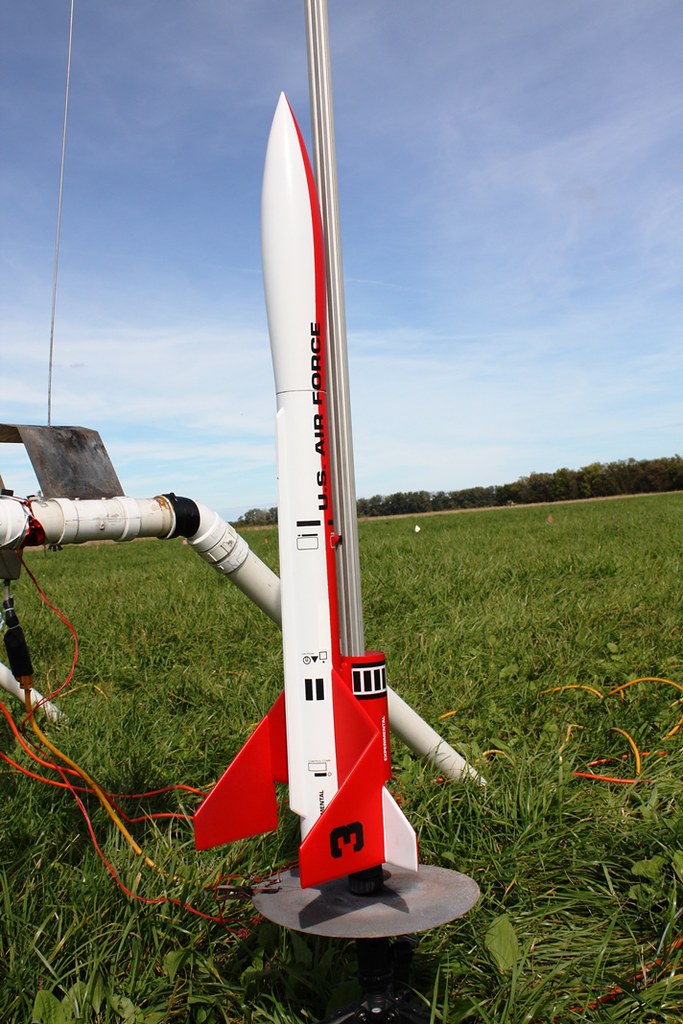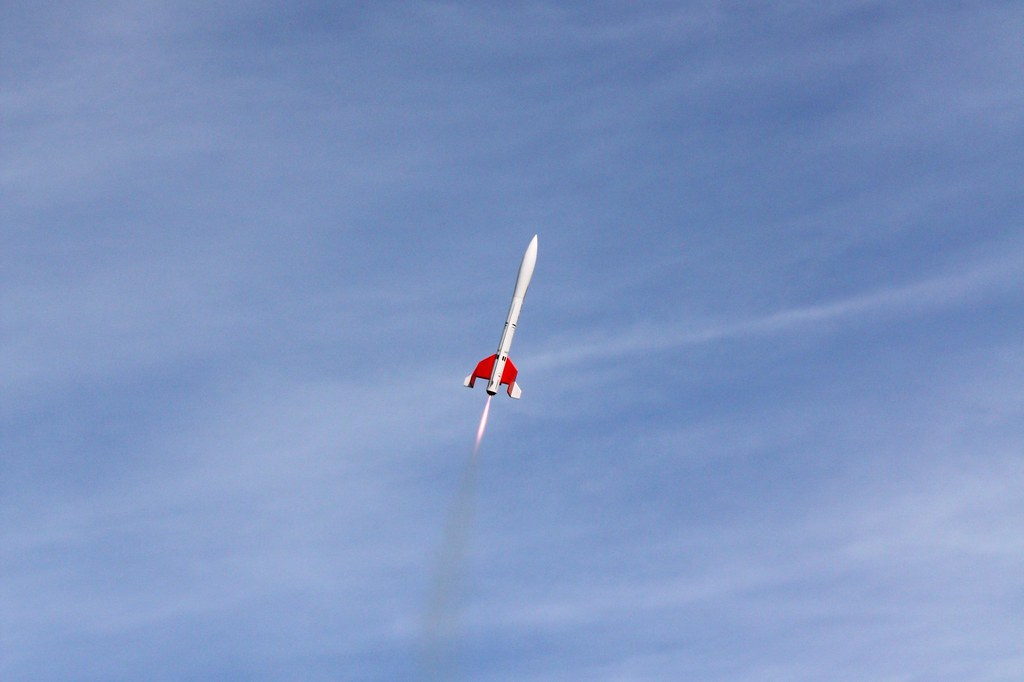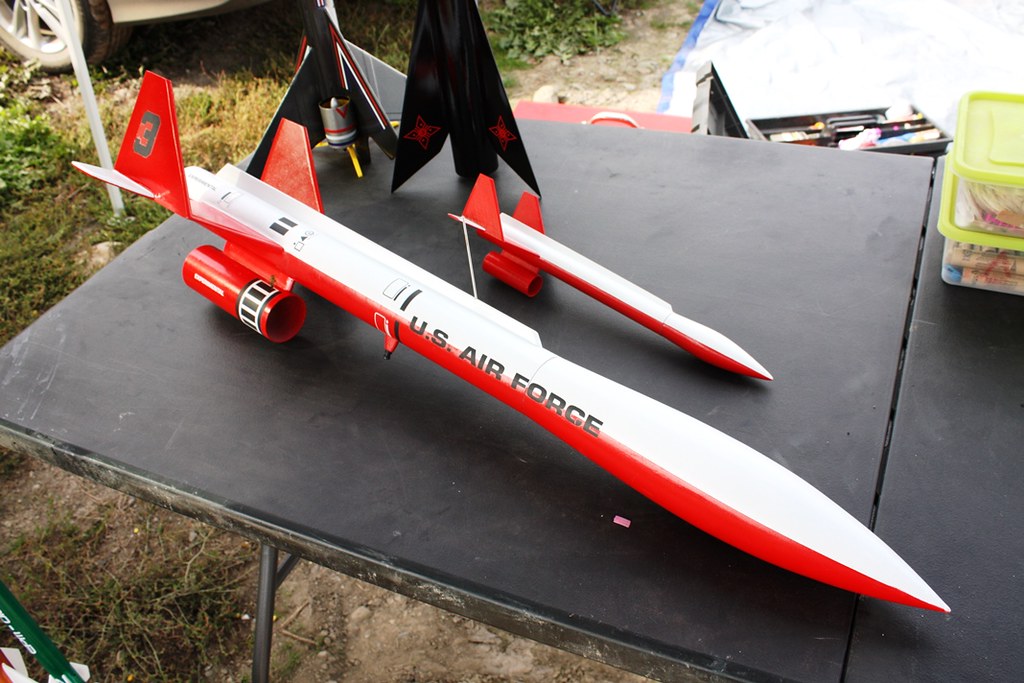EXPjawa
Well-Known Member
Some folks might remember the Estes EAC Firecat - a factory kitbash of the early '70s Honest John and the Bandit, into an entirely different looking new model. The Firecat was only sold to members of the EAC, so it never appeared in the main catalog. Take the HoJo nose cone, tube, rework the fins, make a few other bits from the scrap balsa sheet, and throw in decals from the bandit. Oh, and a bit of BT-48 tube for how knows what reason. Somewhat recently, someone that flies with my nephew at LUNAR launches gave him an unfinished Firecat, which prompted a bit of research into what it actually was. This led to me building a clone:

And anyone that has paid attention will not be surprised that this further led to wanting to build an upscale. When I first built the clone, I modeled in Rocksim so that I could make sure that it would still be stable if I used basswood instead of balsa for the complex fin structure. Once I had that, scaling it up was easy - except for the nose cone. I really wanted to go up to BT70 size, like I've done on a number of other projects, because I really like the size and it lends itself to a nice midpowered scale rocket. This one would be a little less than 3' long at that size. However, I couldn't find off the shelf HoJo nose cones for anything larger than 1.6" that wasn't a giant fiberglass piece.
So, I decided to commission Sandman to make me the cone and decals, while he was at it:


This cone is more true to scale, whereas the original one used a shortened semi-scale cone, so that will alter the size or proportion of the finished product. Some thought was required to decided what to do with that...

And anyone that has paid attention will not be surprised that this further led to wanting to build an upscale. When I first built the clone, I modeled in Rocksim so that I could make sure that it would still be stable if I used basswood instead of balsa for the complex fin structure. Once I had that, scaling it up was easy - except for the nose cone. I really wanted to go up to BT70 size, like I've done on a number of other projects, because I really like the size and it lends itself to a nice midpowered scale rocket. This one would be a little less than 3' long at that size. However, I couldn't find off the shelf HoJo nose cones for anything larger than 1.6" that wasn't a giant fiberglass piece.
So, I decided to commission Sandman to make me the cone and decals, while he was at it:


This cone is more true to scale, whereas the original one used a shortened semi-scale cone, so that will alter the size or proportion of the finished product. Some thought was required to decided what to do with that...































